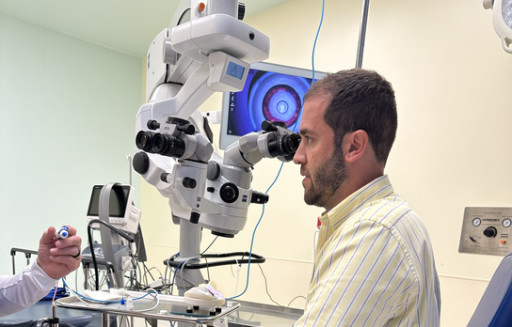All Categories
Featured
Table of Contents

The world of vision correction is rapidly progressing, driven by groundbreaking technological developments that are improving exactly how we perceive and treat eye wellness. From laser surgical treatments to innovative eyewear, the choices readily available today are not only much more reliable but also provide to the special needs of each person. In this blog site, we will certainly explore exactly how technology is enhancing vision modification alternatives, resulting in boosted patient results and complete satisfaction.
1. Laser Modern Technology Innovations.
At the forefront of vision adjustment innovation are sophisticated laser treatments like LASIK and PRK. These methods have actually been transformed by the intro of femtosecond lasers, which produce specific and controlled cuts in the cornea, decreasing discomfort and enhancing recovery time.The most recent improvements, such as topography-guided LASIK, enable a tailored therapy plan that accounts for the one-of-a-kind curvature of an individual's cornea. This degree of customization not only enhances the accuracy of the treatment but also reduces the threat of difficulties, causing more clear vision post-surgery.
2. Smart Call Lenses.
The growth of clever call lenses represents a significant leap in vision correction technology. These lenses can check numerous wellness specifications, such as glucose degrees in diabetics or intraocular stress for glaucoma clients.By integrating sensors right into the lens layout, producers are developing an item that surpasses vision correction, offering useful health and wellness information in real-time. As research study in this field proceeds, smart get in touch with lenses might possibly transform just how we take care of eye health and wellness and problems connected to vision.
3. Advanced Intraocular Lenses (IOLs)
For patients going through cataract surgical procedure or looking for options for presbyopia, progressed intraocular lenses have become a game-changer. Today's multifocal and toric IOLs are created to give clear vision at several ranges, reducing dependence on glasses for daily tasks.New innovations permit the customization of IOLs based upon specific way of livings and visual demands. For instance, suiting IOLs can shift their focus based on the eye's position, providing a more all-natural aesthetic experience. These innovations make sure that clients delight in much better visual results after surgery, improving their high quality of life.
4. Telemedicine and Remote Surveillance.
The COVID-19 pandemic accelerated the adoption of telemedicine, and this fad has actually extended into eye care. Clients can now seek advice from eye treatment experts from the convenience of their homes, going over symptoms and therapy alternatives without the requirement for in-person brows through.Remote monitoring devices that attach to tablets or smartphones permit clients to track their eye health and wellness and vision changes in time. This information can be shown doctor, making sure timely treatments and customized treatment strategies. The ease and access of telemedicine are particularly beneficial for individuals with movement difficulties or those residing in country areas.
5. Artificial Knowledge in Eye Care.
Fabricated knowledge (AI) is progressively becoming an essential part of eye treatment. AI algorithms are utilized to evaluate large collections of information, allowing early discovery of conditions like diabetic retinopathy and macular degeneration via retinal imaging.AI can aid eye treatment specialists by highlighting problems that may call for more examination, enhancing analysis accuracy and effectiveness. By simplifying the diagnostic procedure, AI not just enhances patient care however also permits even more prompt treatment interventions.
6. Customized Eyeglasses Solutions.
The rise of tailored eyeglasses has changed how individuals approach vision improvement. Advanced 3D printing modern technologies allow the development of individualized frames and lenses customized to a patient's special face structure and vision needs.In addition to aesthetic advantages, customized glasses improves convenience and performance. Clients can currently pick from different lens choices, including blue light blocking, photochromic, and high-index lenses, guaranteeing they discover the excellent remedy for their way of living and visual preferences.
Conclusion.
Modern technology is considerably changing vision improvement alternatives, leading to far better results and increased satisfaction for individuals. As these technologies continue to evolve, individuals can expect a much more personalized and reliable strategy to vision adjustment, eventually boosting their high quality of life.Table of Contents
Latest Posts
Explore Oil Changes & More: Full Services Guide from Montclare Auto Repair
Published May 26, 25
1 min read
Why Chicago Drivers Trust Montclare Auto Repair for Dependable Service and Great Savings
Published May 25, 25
1 min read
Shield Your Financial Investment with Professional Rain Gutter Setup
Published May 24, 25
1 min read
More
Latest Posts
Explore Oil Changes & More: Full Services Guide from Montclare Auto Repair
Published May 26, 25
1 min read
Why Chicago Drivers Trust Montclare Auto Repair for Dependable Service and Great Savings
Published May 25, 25
1 min read
Shield Your Financial Investment with Professional Rain Gutter Setup
Published May 24, 25
1 min read